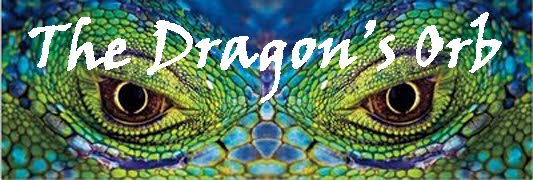
I am just dropping this out as a conversation starter.
In my history in the martial arts I have worked out with quite a few groups and people. One of the topics that often comes up is uniform standards. I know a lot of artists get very up tight about this subject. I have felt people giving me the stink eye at seminars because I have a patch which their organization does not, or am not wearing a hakama.
On various aikido websites I have seen teachers discuss strict standards they set for uniforms in the dojo. It makes me often wonder why. The last thing I want to do is baby sit adults or tell other people what they should do. I often wear a uniform, but I often think they are silly.
In any exploration I like to start with words. Let us look at the word uniform.
u·ni·form
adjective
1.identical or consistent, as from example to example, place to place, or moment to moment: uniform spelling; a uniform building code.
2.without variations in detail: uniform output; a uniform surface.
3.constant; unvarying; undeviating: uniform kindness; uniform velocity.
Interesting. I would not use this word to describe any element of aiki practice as I personally see it. Aiki by it's very nature has no uniformity. Techniques are never identical. Consistency is an illusion we build in our communal physical culture by over conditioning partners to move the way our art form demands it.

In the old days people trained in their clothes. Karate men from Okinawa did not wear the white uniforms until the art began being dispersed in Japan. Kung Fu men from the days of old are seen in their street clothes, or their monastic clothing, which is really their daily wear. I have read in the early days in Ueshiba's aiki budo he insisted on hakama, but that was a fairly common piece of clothing, and people often borrowed their father's or grandfathers old formal wear. Strict uniform codes in civilian dojos doesn't seem to me to have ancient roots at all. Of course there is the flip side to this argument is that of course people wore uniforms when they trained in the martial arts, because they were soldiers. The martial arts are the art of war after all. Soldiers of course wear uniforms. A yin yang expression of the martial mind and the personalities that lie within it.
When I look at the modern dojos I see a lot of the character of the art they are forming by the way they wear their uniforms. If they have a strict uniform code they often have a military feel to the dojo. From my experience most of these dojos rank is followed and a strict curriculum is taught. Conformity is valued over creativity. Following example is valued over innovation. The martial form is to be learned by following and through example. Rank earned in other arts is not valued because it does not come from the dojos structure. Ritual tends to be enforced, even if it is exotic and from other cultures standards. The attacks are stylized, as well as the responses. Even randori, or free play, will have a lot of rules and be stylized.

After thinking about it for a while it struck my that often in groups that do have a uniform, the leader breaks the uniform code by wearing something different. Kano and Ueshiba Sensei both often are seen in demonstrations wearing clothing that no other person in their art seems permitted to wear. It strikes me as strange, what is good for the group doesn't apply to the head. There is something interesting to learn in that.

When I look at dojos with looser uniform I tend to see the opposite mentality of the players involved. Ritual breaks down into conversation. Senior/junior relationships come more from mutual understanding than from a system. Drills are often novel and may include influences from several styles. Creative novel movement is rewarded as long as it effective. The parameters of style of more for safety rather than passing on a perfect copy of an idea. Drills and exercises are preferred to precise kata work. Often there will be multiple instructors rather than a center standard of knowledge.
I am sure most dojos fall in between these two ideas I have laid out. I don't really care how you run your group or your school. For me though, I find telling adults how they must dress to be distasteful. I don't want you for your dress code, I want people to join our training for the shared experience of movement.
I am sure all educational models have their uses. Personal taste and artistry come into play. We have made our personal choice how to approach it as a group. Our group doesn't really have a uniform code. Most of us sport the judo jackets and the colored belts. I usually wear a rope with a kendo gi, because I find it fits nicer. Some of our members like t-shirts. One of our group doesn't like uniforms and doesn't wear it. I only ask everyone eventually get a white uniform for seminars if we travel to them, so we don't blunder through everyone else's game too much. I personally respect the color of belt anyone has earned in any school. I find the people that can move wear their belts, The people that have forgotten or never went high in the other art choose to start with white. Many teachers try to control the group with rules, I personally prefer to let people control themselves. For me, and my path it feels more like the free motion that is supposed to be aiki.
Whenever the topic of uniforms comes up, I like to pull out this classic film.











